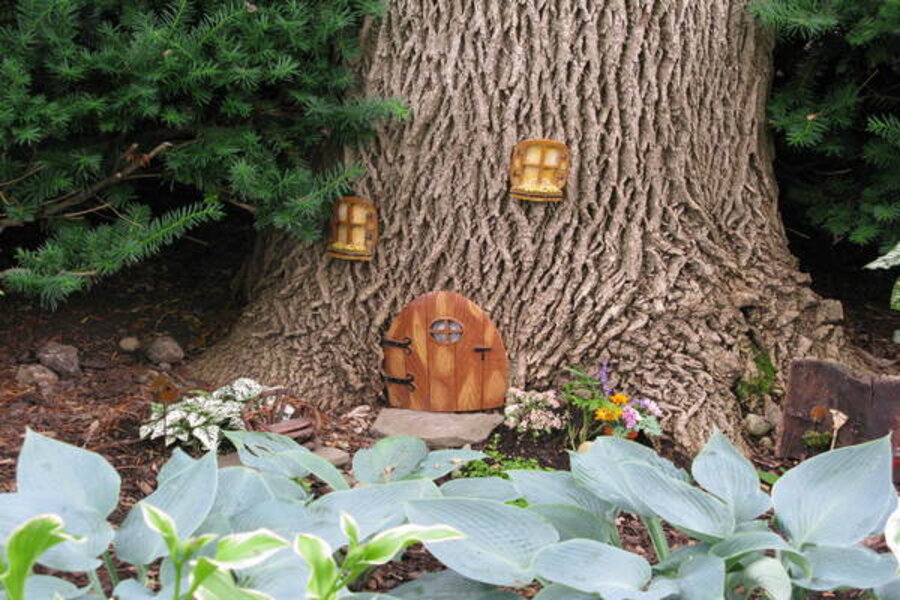Fairy gardens unleash the imagination
Loading...
The long-awaited holidays are over. Now there is nothing to distract me from what lies ahead: months of bitter cold, vicious wind, and fearsome ice.
During these long, cold, drab days of winter, I spend a lot of time going through photos of the incredible gardens I had the pleasure of viewing this past summer.
The purpose for this activity is twofold: to catalog the photos for future reference and to see what lessons – or trends -- can be gleaned from the various gardens I have seen.
What I notice immediately is the immense popularity of fairy gardens in the home garden. For centuries, mankind has been fascinated by the mystifying legend of fairies, of so-called “wee folk” who can be kind to us humans or be mean and mischievous.
While concrete evidence of the existence of fairies is, naturally, rather hard to come by, adding fairy gardens within our landscapes is one way to we can participate in this beautiful centuries-old tradition.
And creating these gardens of whimsy takes little more than a tad of fairy knowledge, a bit of imagination, and a small patch of space in your landscape.
Though undoubtedly a fun project for you and your children, transforming a small patch or corner of your yard into a place for fairies would enjoy playing and frolicing, also allows your inner child to soar again.
What are fairy gardens?
They are miniature gardens within the landscape that give the illusion of tiny creatures living there. Ideally, fairy gardens are located in small, somewhat secluded parts of the garden, giving the visitor the feeling that they just happened to “stumble” upon a magical place.
But then, just as many fairy gardens are planted in containers, kept safe by the front door.
Creating a fairy garden
As with any other project, knowledge of the subject matter is imperative for success. You do not need to believe in the mythical creatures in order to create a fairy garden in your landscape. Nor is it difficult to create one, but learning what fairies are supposed to prefer in their environment – such as foxgloves – is probably a wise move if you want to entice them to your yard.
A good – and fun – place to start some research into fairy lore is with Doreen Virtue’s book, "Fairies 101: An Introduction to Connecting, Working, and Healing with the Fairies and Other Elementals."
A garden of delights
If you are not sure where to begin, begin small. Create a container fairy garden. This approach allows even apartment and condo dwellers who lack a backyard to have one. [See first photo above.]
Though there are certain flowers and herbs that have long been associated with fairies, if those plants don’t fit your garden scheme, don’t fret.
Instead, select plants that are suited to your garden theme and growing conditions, be it sun or shade, making sure they are small enough to keep them in scale with a fairy garden.
Fairies are said to be partial to the secret hiding places of the garden, such as a miniature fern grove in a secluded corner of the yard, the hollow of a rotten log, or a clearing at the base of a tree. They favor gardens with wildflowers and a slight, unkept look, as well as elfin thyme (Thymus serpyllum ‘Elfin’) and Irish moss (Sagina subulata) as a soft meadow to sleep on. .
Since fairies would need a space of their own for celebrations and festivals, small stones and pebbles for pathways and tiny benches, chairs, fencing, and arbors could provide encouragement for the fairies to stay.
Weatherproof doll-house furniture, miniature glazed ornaments, and a small dish containing water embedded into the surface to resemble a pond can be enticing. A whimsical fairy door at the base of a tree would allow fairies to both leave quickly should danger threaten. [See second photo above.]
Allow your imagination to bloom. Think of acorn caps as fairy cups, walnut shells as fairy bowls, and small inverted champagne glasses as birdbaths.
Tap into the minds of your children for ideas. Your only limitation is your imagination.
-----
Betty Earl, the Intrepid Gardener, is one of eight well-known garden writers who blog regularly at Diggin' It. She's the author of “In Search of Great Plants: The Insider’s Guide to the Best Plants in the Midwest.” She also writes a regular column for Chicagoland Gardening Magazine and The Kankakee Journal and numerous articles for Small Gardens Magazine, American Nurseryman, Nature’s Garden, and Midwest Living Magazine, as well as other national magazines. She is a garden scout for Better Homes and Gardens and a regional representative for The Garden Conservancy. To read more by Betty, click here.







